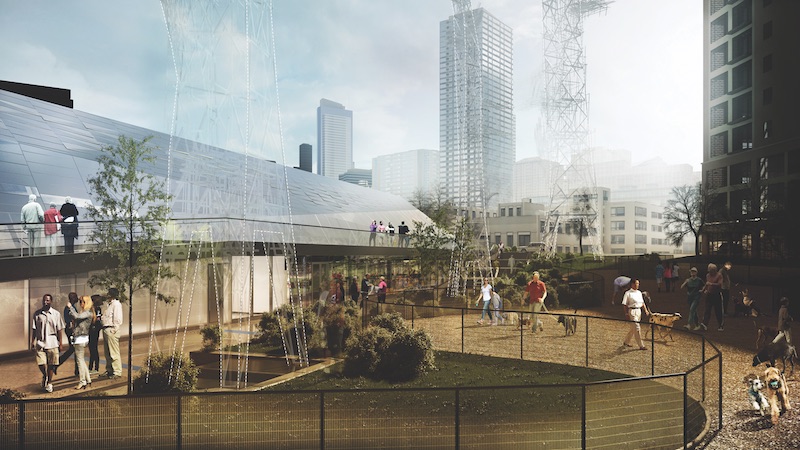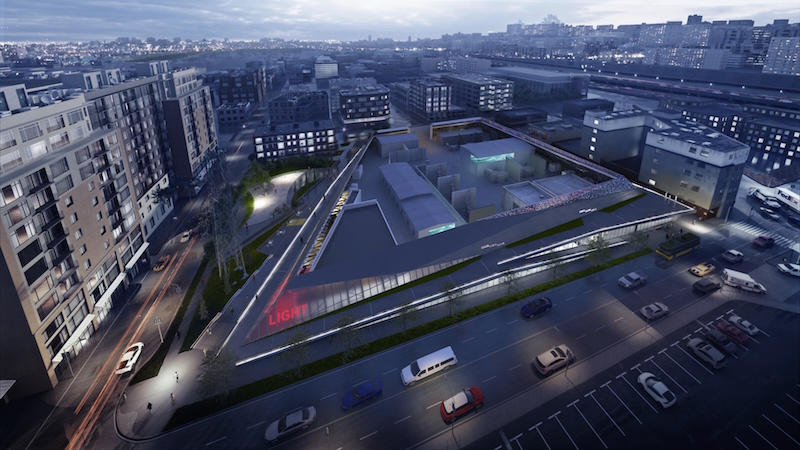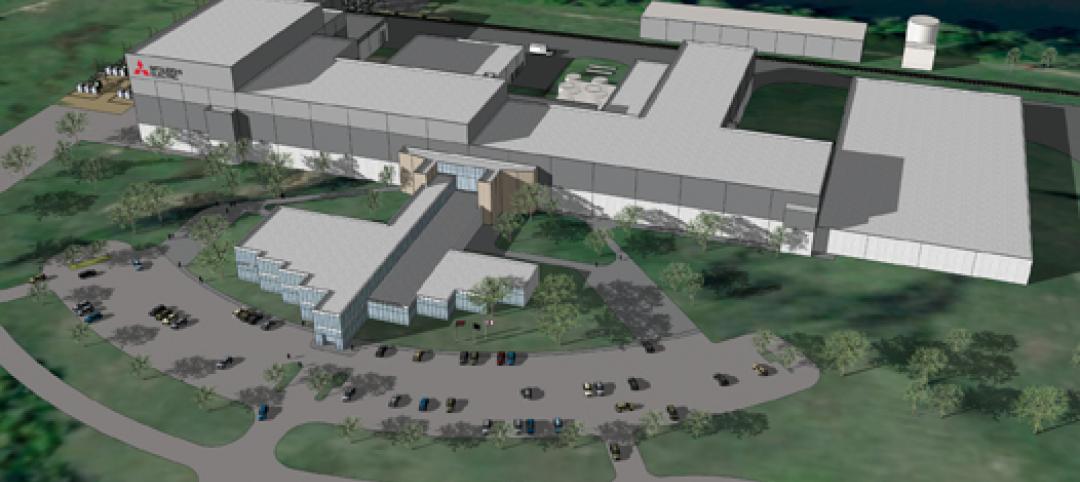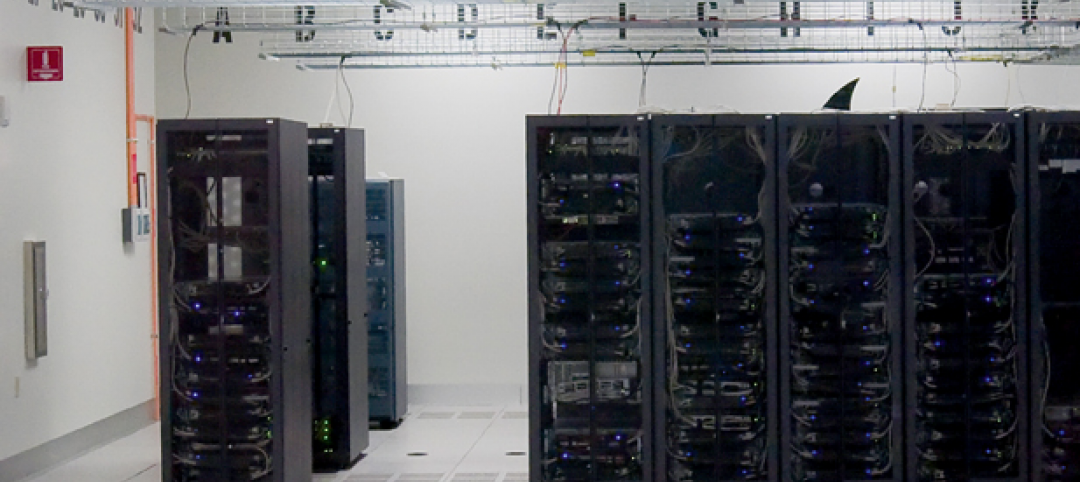Five years ago, it was apparent that Seattle’s urban redevelopment was expanding at a pace that would require more electrical output. Adding urgency to the city’s growth plans was the fact that its aging Broad Street substation was reaching its load limits, and part of that substation’s feeder system would be de-energized over time to accommodate the construction of the Alaskan Way Viaduct replacement tunnel.
Seattle City Light, the city-owned electrical utility, finally got design approval in 2012 for the Denny Substation, which had been in the works for nearly a decade. Soon after, Amazon announced that it would build its massive new headquarters complex along the Denny Way thoroughfare. “That made all of us look smart,” says Michael Clark, PMP, Seattle City Light's Program Manager on the Denny Substation project.
Seattle City Council gave this $209 million substation—the first to be built in Seattle in 30 years—the final go-ahead in August 2015. Construction of the 110,000-sf substation began nine months later on a 120,000-sf lot where a decommissioned Greyhound bus maintenance terminal once stood. Seattle City Light expects Denny Substation to be operating by late 2018.
What makes the Denny Substation different from similar facilities is that it is designed to invite people to the site and offer them recreational activities. The project has 44,000 sf of open space and an off-leash dog park, plus an ADA-accessible quarter-mile walking loop that rises 16 feet above street level to provide pedestrians views of a public park, a landscaped terrace, and the cityscape.
One side of the building will include an area that can accommodate food trucks and other open-space activities. The design incorporates a learning center that provides information about Seattle City Light and how it promotes renewable energy. The substation will be powered by 89.9% hydroelectric energy and 3.9% wind energy, with exhibition and meeting spaces producing more power than they expend.
Metal-clad walls, 35 feet high, slope inward toward the substation, reducing its mass at the pedestrian level. Translucent glass panels will emit a soft glow at night.
 An off-leash dog park at Denny Substation. Project team: NBBJ (architect), Power Engineers (electrical design), KPFF Consulting (SE, CE), Shimmick Construction (underground network distribution system), and The Walsh Group (GC). Image Courtesy NBBJ.
An off-leash dog park at Denny Substation. Project team: NBBJ (architect), Power Engineers (electrical design), KPFF Consulting (SE, CE), Shimmick Construction (underground network distribution system), and The Walsh Group (GC). Image Courtesy NBBJ.
The city mandated that 1% of this project’s budget be spent on public art. Built into the corners of the substation are two commissioned pieces. "Switchwall," by artist Ned Kahn, consists of a series of “switches” that move when the wind blows and turn on different-colored LED lights, creating a moving pattern. "Transforest," by Lead Pencil Studio’s Annie Han and Daniel Mihalyo, is a 120-foot-high tower installed in the open space, which combines the beauty of the Pacific Northwest with the history of local power generation and transmission.
Community input and debate are integral to the city’s design-review process, known as The Seattle Way. “A utility must serve other than just its mission,” explains Clark. The dog park and walkway came out of this process, to provide public offsets for vacating a nearby street.
The site also needed extensive environmental cleanup, which required digging 40 feet below grade to remove soil contaminated by diesel fuel from the bus terminal.
Seattle City Light commissioned NBBJ to design the substation partly because of the firm’s reputation for developing concepts that all stakeholders could embrace. “There was substantial outreach, and we took the opportunity to invite the community into the process,” says Carl Tully, AIA, LEED AP, Principal and NBBJ’s project manager for the substation.
Tully credits Clark, who has been on the city’s redevelopment committee since 2002, with keeping the substation project in play. As for NBBJ’s contribution, he says, “We opened the city’s eyes to what’s possible, not just to cloak or cover up the building, but to make it a point of civic engagement.”
Tully says the design needed to account for “fixed parameters” that include a high-pressure fluid-filled 115-kV transmission cable that runs through the property. Some of the facility’s electrical equipment is quite tall, so NBBJ relocated them to the interior and placed lower equipment to the periphery. This helped reduce the scale of the substation and created opportunities for elevated walkways and occupiable space, says Tully.
He believes the concept for the Denny Substation—taking public infrastructure and creating public space—could be duplicated in other cities. But Clark doesn’t think Seattle will need another substation of this magnitude for some time. “The buildings going up are exercising much better power management, so our load has remained relatively flat,” which also means future revenues could be lower.
Clark suggests that with more cities moving toward microgrids for growing neighborhoods, there could be a need for smaller substations to support them.
Related Stories
| Apr 12, 2011
Mitsubishi commissions electric power manufacturing plant in Memphis
Greenville, S.C.-based design and construction firm O’Neal Inc. is providing design, engineering, procurement, and construction services for Mitsubishi Electric Power Products.
| Feb 23, 2011
Data center trends: green design, technology upgrades
While green data centers will continue to be a trend within the industry, technology is also driving infrastructure upgrades that have never been seen before, according to the 2011 Data Center Technical Market Report from Environmental Systems Design. The report also includes an overview of the national data center market, construction costs, blackouts and disaster prevention, and site selection.
| Jan 4, 2011
Grubb & Ellis predicts commercial real estate recovery
Grubb & Ellis Company, a leading real estate services and investment firm, released its 2011 Real Estate Forecast, which foresees the start of a slow recovery in the leasing market for all property types in the coming year.
| Nov 29, 2010
Data Centers: Keeping Energy, Security in Check
Power consumption for data centers doubled from 2000 and 2006, and it is anticipated to double again by 2011, making these mission-critical facilities the nation’s largest commercial user of electric power. Major technology companies, notably Hewlett-Packard, Cisco Systems, and International Business Machines, are investing heavily in new data centers. HP, which acquired technology services provider EDS in 2008, announced in June that it would be closing many of its older data centers and would be building new, more highly optimized centers around the world.
| Nov 3, 2010
Public works complex gets eco-friendly addition
The renovation and expansion of the public works operations facility in Wilmette, Ill., including a 5,000-sf addition that houses administrative and engineering offices, locker rooms, and a lunch room/meeting room, is seeking LEED Gold certification.
| Oct 12, 2010
The Watch Factory, Waltham, Mass.
27th Annual Reconstruction Awards — Gold Award. When the Boston Watch Company opened its factory in 1854 on the banks of the Charles River in Waltham, Mass., the area was far enough away from the dust, dirt, and grime of Boston to safely assemble delicate watch parts.
| Oct 12, 2010
Building 13 Naval Station, Great Lakes, Ill.
27th Annual Reconstruction Awards—Gold Award. Designed by Chicago architect Jarvis Hunt and constructed in 1903, Building 13 is one of 39 structures within the Great Lakes Historic District at Naval Station Great Lakes, Ill.
| Oct 12, 2010
Full Steam Ahead for Sustainable Power Plant
An innovative restoration turns a historic but inoperable coal-burning steam plant into a modern, energy-efficient marvel at Duke University.
| Oct 12, 2010
From ‘Plain Box’ to Community Asset
The Mid-Ohio Foodbank helps provide 55,000 meals a day to the hungry. Who would guess that it was once a nondescript mattress factory?















